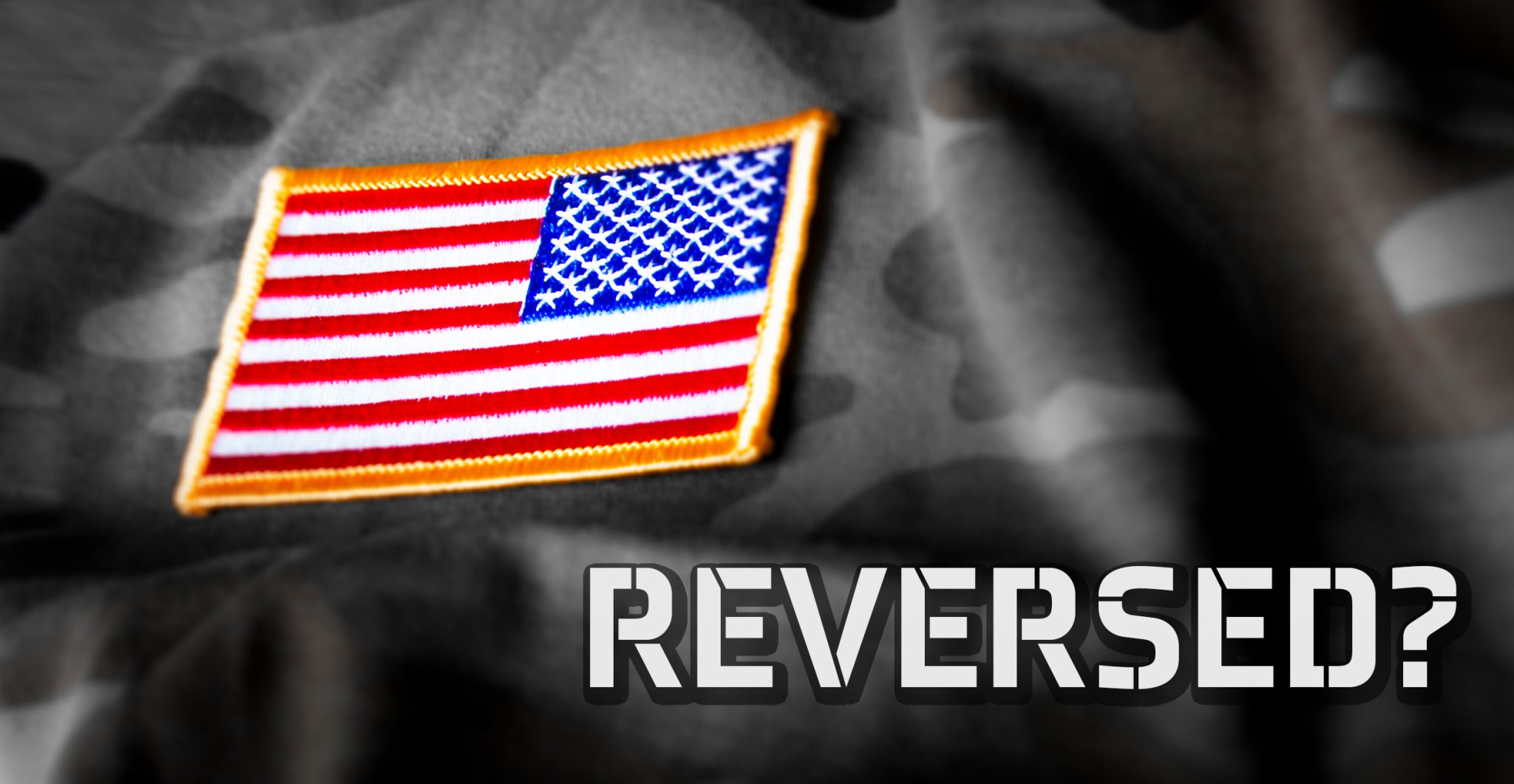War History Online proudly presents this Guest Piece from Jennifer Grant who writes on behalf of American Flags
The American flag, the nation’s symbol of patriotism, is flown proudly on office and government buildings as well as private residences and parks. The Stars and Stripes is the symbol of the United States and our country’s dedication to protecting the lives and liberties of its citizens.
To reflect this high degree of respect that U.S. citizens give to the flag, numerous federal rules and regulations regarding the treatment of the American flag are in place.
Many often ask one question though: Why are American Flag patches on military uniforms shown in reverse?
The U.S. Department of Defense has declared this patch must be “worn, right or left shoulder, so the star field faces forward, or to the flag’s own right.”
To fully appreciate what this means, we’ll go into detail on the specifics of flag placement on military uniforms.
The Symbol of the Flag
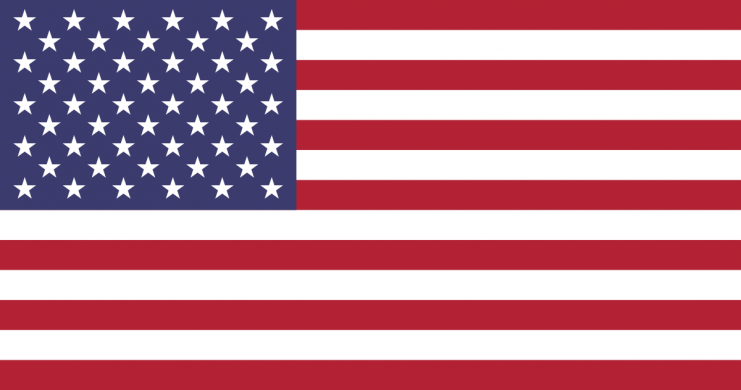
One of the core historic tenets of the American flag is that it “bows to no man or king,” and all ceremony and regulations regarding the flag follow this simple paradigm. With the drafting of the Declaration of Independence and the subsequent establishment of a new nation standing against the tyranny of overseas governance, the American flag became a symbol for the freedoms the brave leaders and soldiers of the Revolutionary War fought for.
Each part of the American flag stands for something that reflects the enduring spirit of this nation’s people:
- Thirteen stripes for thirteen original colonies
- 50 stars for each state
- Red for valor
- White for purity
- Blue for vigilance and justice
Wherever the American flag is flown, it should only be raised from sunrise to sunset and must be carefully folded and stored to protect it at night and during inclement weather.
If the flag is displayed flat against a wall or window or hung vertically in any way, the field of blue with its white stars must stand at the top and to the left of whoever can see it. However, on military uniforms, this stipulation is altered slightly, but for a good reason.
Waving in the Breeze
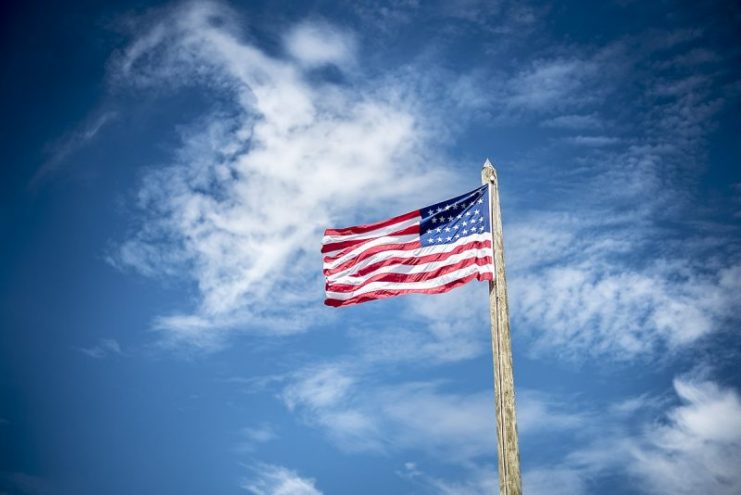
The truth is that only those American flag patches worn on the right shoulder appear reversed; on the left shoulder, the patch appears in its usual, accepted position (blue field in the upper left). The simple reason for this is that tradition dictates the flag must always be facing forward. It cannot ever be seen as if it were in retreat.
This seemingly simple expression is an extremely powerful symbol in American culture. Many consider this tradition American arrogance. That is a short-sighted view, though, because that alleged arrogance has nothing to do with misplaced thoughts of superiority. Rather, it comes from a deeply and widely held respect for all people, no matter where they come from.
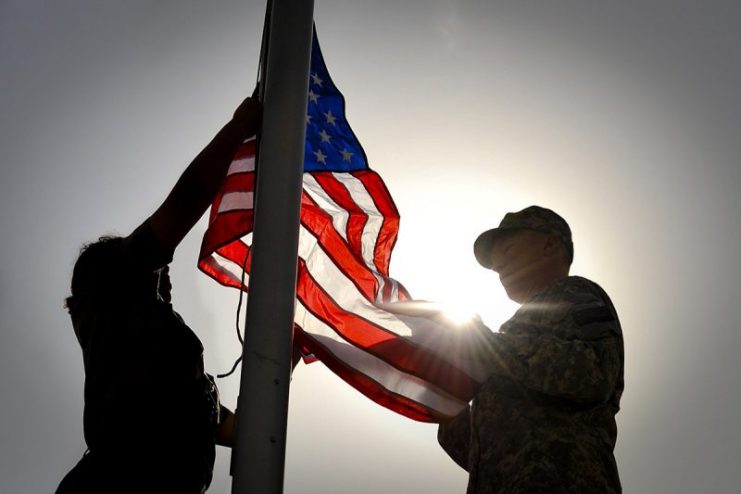
The United States has long been a magnet for the world’s poor and displaced. Our democratic traditions welcome everyone. We have long had a multi-cultural heritage and proudly protect our welcoming traditions.
When the American flag is displayed in its proper position on a flagpole, the blue field is in the upper left corner, and the stripes are free to wave in the wind. On a military uniform, the same idea applies. A patch on the left shoulder will appear as the flying flag.
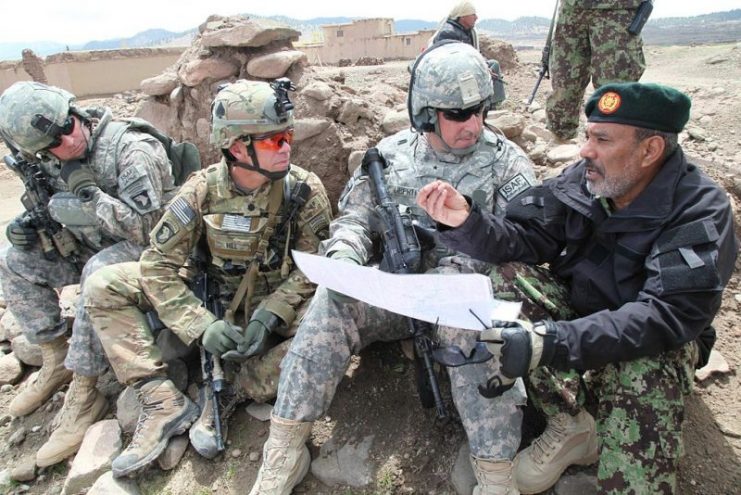
On the right shoulder, the patch will appear reversed, but, in fact, it is optimally placed to ensure the field of blue is in the forefront, giving the effect of a flag waving in the breeze with a soldier’s forward momentum. Thus, the reversed American flag on the right shoulder still exemplifies the stalwart dedication of its military forces to always have the flag oriented to properly reflect the sacred traditions it symbolizes.
Significance of the Forward-Facing Flag
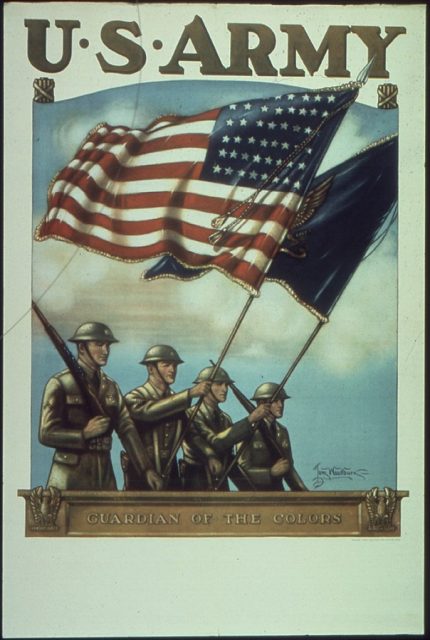
In addition to the overall respect that a properly faced flag shows for the nation, the practice of the blue field facing forward dates back to when foot soldiers first flew the flag in battle. Since the blue field is closest to the pole when a standard-bearer takes the field, the flag will billow out behind him as he charges forward to engage the enemy.
In other words, the full might of the nation leads the charge against its enemies, and it will not retreat.
This adherence to tradition and respect for the American flag is not limited to military uniforms. Any American aircraft, space shuttle or government vehicle will display the flag in the same way. Again, this is indicative of the American spirit, which balks at the idea of backing down — of giving up — no matter the possible consequences.
The Star-Spangled Banner
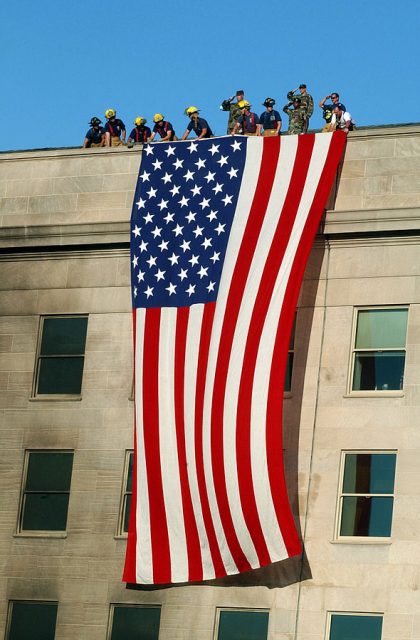
From “Old Glory” herself to the modern outdoor garden flag, every American flag is held to the same standard of respect and regulation that maintains the powerful sense of spirit behind this treasured symbol of American liberty.
The Star-Spangled Banner waves in honor of its people and its history; on the shoulders of its soldiers, it stands ready to face battle, to face hardship, to face the world as it is. But no matter the challenge, no matter the danger, the flag will not turn tail and run, and neither will its honored military.
Final Word
Hanging a flag in one’s yard or place of business is a symbol of national respect. Ensuring that the flag is hung properly honors the hallowed spirit of this great country.
